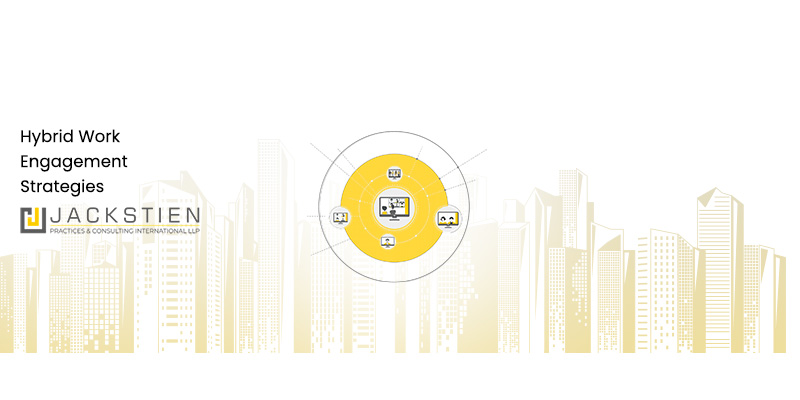Hybrid work models have transformed the workplace, but presented completely new challenges to tackle. In the realm of hybrid work, individual flexibility wars with team and job engagement. Reimagining employee engagement is critical to unlock the potential of this new era.
Foreword on the Importance of Employee Engagement
Engaged employees are essential to bring a spark that ignites productivity and propels success. Engaged employees actively seek opportunities to contribute, collaborate, and innovate, driven by a shared sense of purpose and the freedom to work in their preferred environment. Employee engagement becomes a powerful catalyst for creating a thriving work culture that transcends physical boundaries.
Let’s discuss some of the effective ways to refine employee engagement in the era of hybrid work.
Hybrid Work Upends What We Know Of Employee Engagement
Employee engagement alternatively refers to the level of enthusiasm felt by a worker toward their role. It sometimes includes the level of camaraderie felt with the wider team set.
The term, however, becomes a lot harder in a hybrid work setting. The primary factor that traditional office setups relied on was the physical presence of teams on-premise as the core of the engagement.
Two key factors are key to consider:
(1) Hybrid work, by definition, allows individuals a level of flexibility where they are not required to be on-premises on all days.
(2) Organizations tend to alternate team members for on-premise coverage as well as to manage the available office spaces.
This essentially means that the full team is unavailable on-premise to start with, creating the first crack in the primary factor core to engagement.
Maintaining Employee Engagement in the Hybrid Work Setting.
Some key areas of focus to transform engagement levels in the hybrid work era:
- Communication Channels: Commit to hybrid work. This starts by letting go of unnecessary empty spaces and spending a fraction of those savings on investing in the right tools. Tools that integrate text, audio and video communication with collaborative work-drives. Tools that enable you to switch from note-taking to video to white-boards to polling to synchronous document editing. These tools are critical to break the barriers between virtual brainstorming sessions to idea-communication to simple demonstration to unite your remote and in-office employees. The synergies created as ideas seamlessly merge create a melting pot of innovation regardless of geography.
- Proximity Bias: The single critical outcome of the point above is removing proximity preference. Getting rid of proximity preference is important because, even in its weakest form, proximity preference tempts team members to put off collaborative work till they are together on-premises. If they happen to be members that are rarely in together, this is even more problematic.
- Goal-Oriented Hybrid Schedule: Collaboratively decide on-prem days on a basis that goes above factory-fitted 3-2 weekdays. Combined with a focus on outcome, this becomes a key focus on teams to work at goals for the common and organizational benefit. .
- Trust, Collaboration, and Teamwork: Cultivate a culture of trust and collaboration that celebrates open communication, idea-sharing, and collective problem-solving. This is an easy sentence to type, but a tough reality to deliver. However, this starts, at the very root, by avoiding monitoring. Create virtual spaces free of work, team-building activities that democratize presence as well as knowledge/ experience sharing initiatives.
- Recognition: Everyone loves a pat on the back for a job well-done. Implement a feedback-rich environment where managers provide regular input and recognition is important but not as easy in a hybrid environment. This is primarily because the effort involved in any feedback when not physically together is an order of magnitude higher. Unless prioritized, it tends to be the first casualty.
- Celebrate: Celebrating wins and acknowledging growth consciously with the involvement of all is critical. Remember, just because an employee isn’t around in person that day does not mean he/ she hasn’t worked as hard. Be conscious about involving them and doing so in a manner that feels equal to all.
Measuring Employee Engagement in a Hybrid Work Setting
The need to effectively measure employee engagement in hybrid work settings becomes critical since individual experiences vary wildly without the constant personal interaction that fuels recognition of flagging engagement. A few points on measurement .
- Candid Surveys and Feedback: Dive into the minds of your employees through anonymous surveys that capture their experiences in the hybrid work model. Craft thoughtful questions focusing on communication, collaboration, job satisfaction, and overall engagement. Analyze the survey results to identify areas for improvement and address potential challenges head-on. Encourage open and honest feedback to understand the pulse of your workforce. Take action based on feedback and do so visibly to encourage hesitant employees to participate.
- Metrics that Matter: Establish performance metrics specifically for impact on engagement. Dive into variations in project completion rates, customer satisfaction scores and peer feedback to gauge quality of engagement across levels.
- Managerial Magic: Encourage managers to self-evaluate their performance in maintaining employee engagement through ongoing meaningful conversations. Provide trainings to the managers or supervisors separate from their teams, focusing on their roles as the flag-bearers of engagement and culture.


